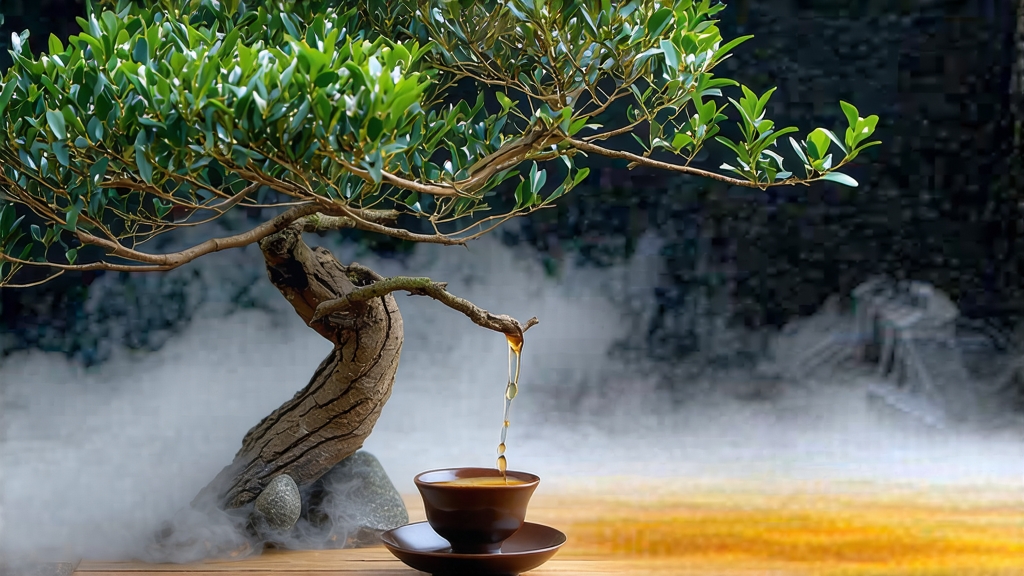
High above the subtropical lowlands of Guangdong Province, the Phoenix Mountains (Fenghuang Shan) rise like a green staircase toward the South China Sea. On these granite ridges, thin mists drift through old-growth forests where tea trees older than the American republic still send gnarled roots into mineral-rich soil. From this dramatic landscape comes Phoenix Dancong—literally “single-bush” oolong—an aromatic marvel that Chinese connoisseurs call the “perfume of teas.” Unlike blended oolongs, each Dancong style is crafted from a single cultivar, often descended from one mother tree, capturing a fragrance so vivid that drinkers swear they can taste fresh lychee, ginger blossom, or alpine orchid in one sip.
The recorded history of Dancong begins during the Song dynasty, when imperial tribute commissioners first catalogued “Phing-hong” tea among the region’s exotic gifts. Local chronicles credit the She ethnic minority with discovering that certain wild tea trees produced leaves redolent of gardenia, honey, or almond. By the late Ming, merchants from the port of Chaozhou were exporting small lots to Southeast Asia via junks that rode the monsoon winds. The name “Dancong” emerged in Qing-era tax registers to distinguish individually harvested trees from the massed bushes of lowland plantations. In 1956, a government survey identified 80 ancient trees exceeding 200 years of age; today, 3,700 old-growth trees are registered as national cultural heritage, each tagged with GPS coordinates and protected by local ordinance.
Botanically, Phoenix Dancong belongs to the Camellia sinensis var. sinensis species, yet centuries of sexual reproduction have created a living library of aromatic chemotypes. Farmers classify them by fragrance profile rather than mere leaf shape, resulting in a lyrical catalog: Honey Orchid (Mi Lan Xiang), Yellow Gardenia (Huang Zhi Xiang), Almond (Xing Ren Xiang), Ginger Blossom (Jiang Hua Xiang), and at least two dozen others. Each aroma type corresponds to a distinct combination of terpenes, esters, and norisoprenoids that intensify under the mountain’s cool nights and ultraviolet-rich sunlight. The most coveted parcels come from elevations between 600 m and 1,200 m on Wudong Peak, where diurnal swings of 10 °C slow leaf growth and concentrate volatile compounds.
Crafting Dancong is a choreography of timing and fire that stretches across twenty-four hours. Picking begins at dawn when two leaves and a bud still hold morning dew; villagers believe the rising sun “locks” the intended fragrance into the leaf. After a brief outdoor withering to reduce moisture, the leaves are moved onto bamboo trays set inside air-conditioned rooms where they are tossed every thirty minutes for six hours. This bruising ruptures cell walls, initiating oxidation that will later be halted at 30–35 %—the sweet spot between green tea’s grassiness and black tea’s malt. The most critical step is the five-to-eight-hour charcoal roast performed in squat clay ovens fueled by lychee wood. Master roasters adjust oven doors by the millimeter, chasing a fragrance they describe as “mountain bones and floral soul.” A single batch may undergo three separate roasts across two months, each followed by weeks of “refining sleep” so that harsh fire notes mellow into rounded complexity.
To unlock Dancong’s kaleidoscope of flavors, gongfu cha is less a ritual than a necessity. Begin with a 120 ml gaiwan or petite Yixing pot dedicated solely to high-aroma oolongs. Use 6 g of long, wiry leaves—enough to fill one-third of the vessel when they unfurl. Flash-rinse with water just off the boil, then inhale the lid: the first breath should deliver a rush of tropical flowers and brown sugar. Subsequent steeps progress in a cadence of 10, 15, 25, 35, 50 seconds, each infusion revealing a new layer. The liquor glows like polished amber, coating the tongue with a silky texture that Chinese texts call “mountain honey.” Look for three pillars of quality: aroma that lingers in the empty cup for minutes, a sweet aftertaste that reappears five minutes later (hui gan), and a cooling sensation in the throat (liang qi) that signals high-altitude provenance. A superior Dancong will yield eight to ten infusions before its fragrance gracefully fades, leaving the leaf still green at the center—a sign